Biceps exercises come in many different shapes and sizes. The main objective is to build the biggest pipes possible, but you don’t necessarily have to marry yourself to a single variation forever. The drag curl is a great way to add a bit of spice to your arm day and earn your pump at the same time.
Some curls call for dumbbells, others use barbells, and there are even variations that utilize cables. The drag curl suits this description to a T. With a wide range of resistance and variations to play with, nailing the drag curl provides a ton of training value.
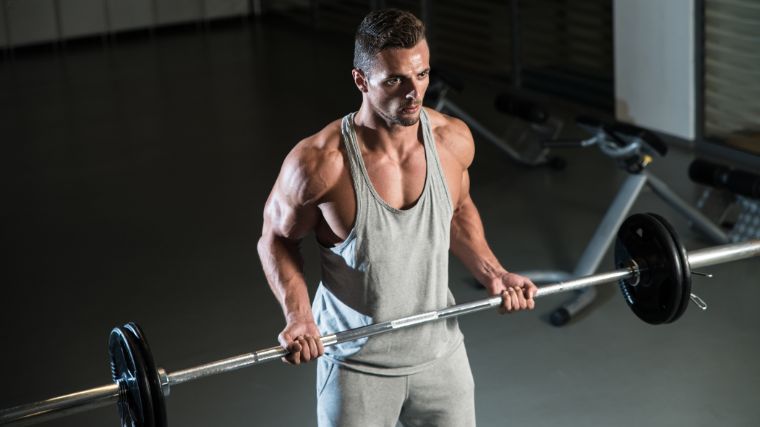
What makes the drag curl so distinct from your run-of-the-mill biceps curl? Elbow position. When you dial in the technique you’ll feel the difference immediately. Here’s how to do the drag curl.
- How to Do the Drag Curl
- Drag Curl Variations
- Drag Curl Alternatives
- Drag Curl Tips
- Benefits of the Drag Curl
- Muscles Worked by the Drag Curl
- Drag Curl Sets and Reps
- Who Should Do the Drag Curl
- Common Drag Curl Mistakes
- Frequently Asked Questions
How to Do the Drag Curl
The drag curl is a simple modification to your normal biceps curl of choice. That said, most people do drag curls with a straight or cambered barbell. Here is a step-by-step breakdown.
Step 1 — Grab the Bar, Palms Up
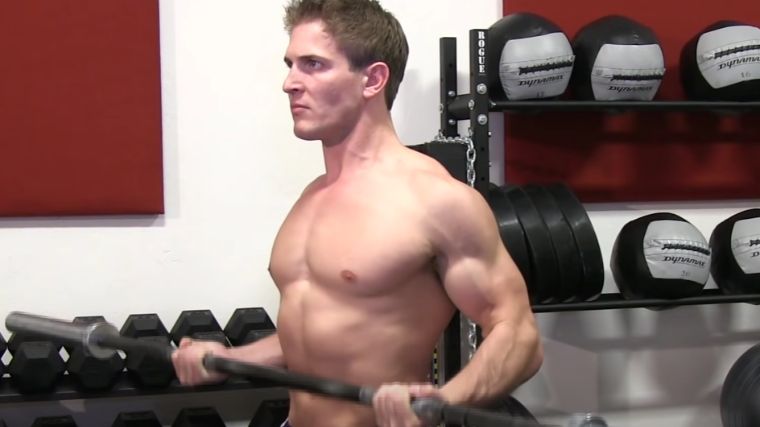
Allow your arms to hang freely at your sides and flex your elbows to approximately 90 degrees. Pinch your shoulder blades together and tuck them down into your back pockets (scapular retraction and depression). This is how you would grip the bar, dumbbells, or any other resistance – maintain this position for the duration of your set.
Coach’s Tip: If you feel pain in your wrists during barbell variations, try using the EZ-Bar.
Step 2 — Stand Tall
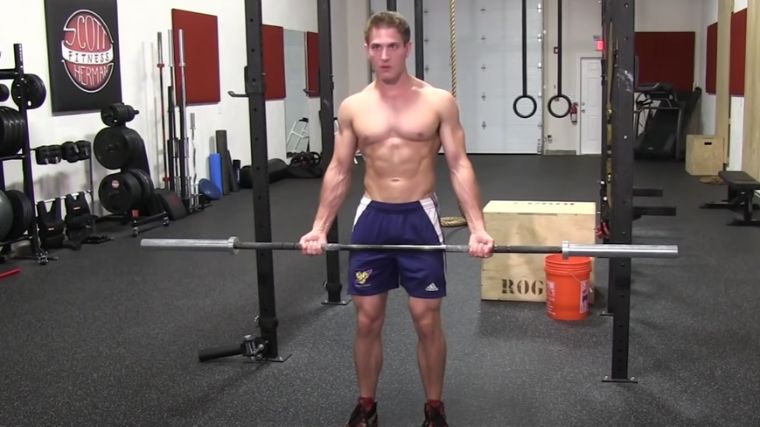
Assume a shoulder width foot stance with a subtle bend in the knees and sit your hips back slightly. Brace your core and maintain this semi-hinged position for the duration of the set. Allow your arms to reach full extension with the weight in your hands — this is your starting position.
Coach’s Tip: Your hinge should be minor, just enough to get full elbow extension on each repetition without running into your body.
Step 3 — Palms Up, Elbows Back
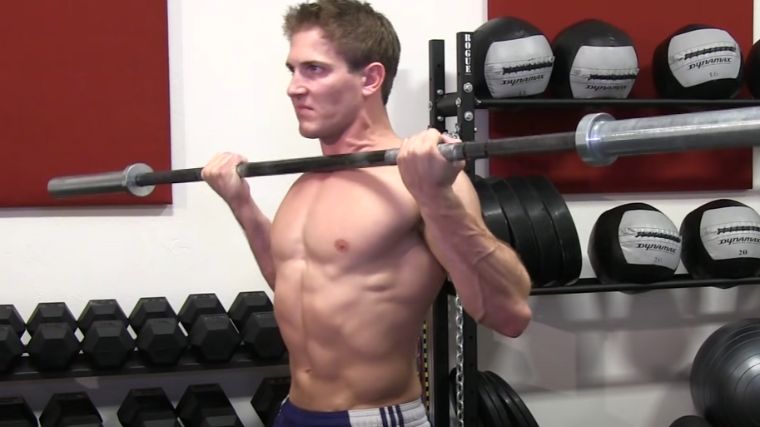
Draw your arm position towards your body so your upper arm is flush or slightly behind your torso. Squeeze the weight tight and flex your elbow, curling the weight while keeping it as close to your body throughout the range of motion as possible. Lower the weight under eccentric control back to the starting position. Repeat for repetitions.
Coach’s Tip: Be sure to maintain constant tension throughout the range of motion, don’t relax during the eccentric phase.
Drag Curl Variations
The drag curl is a neat twist on the traditional biceps curl, but it has some interesting variations of its own. The dumbbell drag curl, cable drag curl, and single-arm drag curl are great options.
Dumbbell Drag Curl
The dumbbell drag curl offers you slightly more customizability compared to a barbell version. Dumbbells allow you to break the weight apart evenly between each hand, accommodating your unique body structure but also helping to isolate each arm.
[Read More: Best Supplements for Muscle Growth]
For a balanced approach to muscle development and to fit your frame a bit easier, try the dumbbell drag curl.
Cable Drag Curl
Using a cable to perform your drag curls introduces a more constant challenge to the equation. Free weights are affected by gravity – this means that depending on the range of motion you’re currently curling through, the level of difficulty might be easier or harder.
The cable drag curl keeps the resistance you feel consistent throughout the entire range of motion. This is a great way to make sure all parts of your biceps are being worked to a similar degree throughout each drag curl repetition.
Single-Arm Drag Curl
The single-arm drag curl provides similar unilateral strength and muscle balance as the dumbbell drag curl. It also helps to accommodate your body structure, but by using only one weight at a time you’ll be forced to stabilize as well.
With only one side of your body loaded, you’ll be constantly fighting against tipping over while completing each repetition. This is a great tool to reinforce your technique and bracing before heading back into other variations.
Drag Curl Alternatives
Sometimes a particular part of the drag curl catches your attention and you really want to double down on it. The Bayesian cable curl, spider curl, or even 21s are great alternatives for the drag curl.
Bayesian Cable Curl
The face-away cable curl is a great exercise to help place you in the shoulders back-and-down position and also achieve a wicked burn. Similar to the drag curl, your shoulder position makes or breaks the face-away cable curl.
[Read More: The Best Back Workout for Men, Women, Strength, and More]
The setup of the Bayesian cable curl itself helps to keep you in the correct shoulder position. From here, knock out some moderate to high repetitions for a similarly deadly burn and you’re all set.
Spider Curl
The spider curl helps to emulate the extreme isolation feeling that a drag curl creates. Line up on a preacher bench facing the opposite direction as normal. With an EZ-Bar, dangle your arms over the bench with your armpits dug deep onto the edge.
As you complete each repetition, you’ll feel the same deep burning contraction as your drag curl.
21s
21s are a particularly challenging exercise where you perform seven repetitions in the lower range of motion, seven in the upper range of motion, and then seven full range of motion reps. This makes the 21s workout extremely effective at replicating the burn and massive pump that a drag curl produces.
Similar to the drag curl, go light to moderate weight here to accomplish the full set without compromising technique or range of motion.
Drag Curl Tips
What makes the drag curl great is that it isn’t just another barbell curl. To get the most out of it, make sure you choose the right tool for the job, go for reps before huge weight, and place it at the end of your workout.
Choose The Right Tool
You can perform a drag curl with just about anything. With that in mind, the major issue with any biceps curl variation is matching it to your own individual body structure.
[Read More: Best Home Gyms]
If you have broader shoulders or lack a bit of mobility, a straight bar might not cause a bit of wrist pain. If stabilizing individual dumbbells is a bit too much, try cables. Find the right tool for the job to keep your biceps working hard.
Reps Before Load
Getting some solid high intensity sets in is the goal for any exercise at the gym. The major crux of the drag curl is that it puts you in a slightly different shoulder position than the standard issue curl.
This position means that loading things up should be a secondary priority, and you should pursue higher repetition sets to achieve your working set intensity. A heavy set of 8 repetitions is likely too difficult to maintain proper form in some cases. Keep things modest at 12-15 repetitions to start and progress slowly.
Make It a Finisher
Since the drag curl is already predisposed to using higher repetitions, try doing it close to the end of your workout when your biceps have already gotten a bit tired. This will help reduce the load you need to use even more to get a meaningful challenge for your biceps. Not only that, but the reduced load will help keep your shoulder or core endurance from breaking down your form.
Benefits of the Drag Curl
The drag curl is a great tool for arm growth, particularly with lower load. Since you’ll utilize a different technique that requires a lot of scapular control, you’ll be able to gain shoulder stability along the way as well.
Bigger Biceps
If you’re going to build bigger biceps, curling is certainly in your future. The drag curl is an awesome choice to target your biceps during an arm day or as a finishing act at the end of a pull session. Training the drag curl a few times per week taking each set relatively close to failure is a straight-forward way to bigger biceps.
Lower Load
To perform the drag curl you’re going to need to hold a stable brace and locked shoulder position. Since you’ll be fighting to maintain your form, the drag curl is performed using lower load and higher repetitions.
[Read More: The Best Online Workout Programs For Coaching, Cardio, Value, And More]
This is a great way to gain muscle without needing to pile on the heaviest exercises one after another. Embrace the burn and build a serious set of arms – keeping the heavier training on the sidelines for a while.
Shoulder Stability
Holding the weight close to your body during the drag curl calls upon some of your shoulder stabilizers. The lower trapezius is particularly important in holding your shoulder blades tucked in the proper position and takes a beating during the higher repetition sets. While you’re pumping away building a great set of biceps, your shoulders should get a nice secondary boost as well.
Muscles Worked by the Drag Curl
The drag curl is predominantly a biceps and brachialis exercise, however your forearms and low trap are also called into action along the way. Here are the major muscles involved in the drag curl.
Biceps Brachii
The biceps brachii are your primary elbow flexors that perform most of the work during various curl exercises. They span from just below your elbow to two different spots at the shoulder meaning that there are two distinct muscle heads making up your biceps brachii. If you’re flexing in the mirror or curling a dumbbell, you’re looking at your biceps.
Brachialis
Your brachialis is a close neighbor to your biceps brachii. It sits just below your elbow and attaches just above. Where the biceps brachii span the entire length of your upper arm, the brachialis attaches about halfway up. This means that both muscles are working synergistically during any exercise that curls your arm.
Forearms
While your forearm muscles are not necessarily required to curl the weight, they are going to get some love from the drag curl. Anytime your grip is involved, the muscles that cause a squeeze at the hand are primarily located at your forearm. The more you perform drag curls, the more of a forearm pump you’ll also achieve.
Lower Trapezius
The lower trapezius is a key player in controlling your shoulder positioning during the drag curl. The lower trap is one of the primary muscles responsible for holding your scapula in place, particularly pinned back and down. Since the unique drag curl form calls for your shoulders to be held in this position, the low trap gets a workout as well.
Drag Curl Sets and Reps
Set and repetition schemes are tied to many of your goals. Scaling load to the heavier side helps develop strength while lighter loads might build endurance. With the drag curl, building up muscle mass and endurance are top of mind — but strength might be a bit harder.
[Read More: 5 At-Home Workouts for Strength, Muscle Growth, Power, and More]
Maintaining the correct position on the drag curl while using heavier weights is extremely challenging, so expect slower progress here.
- For Muscle Gain: Perform three sets of 12-15 repetitions, aim to finish the set with about 1-2 reps in the tank. Rest for 90 seconds between each set.
- For Endurance: Perform three sets of 15-20 repetitions. Rest for only 30 seconds between each set.
- For Strength: Perform 2-3 sets of 8-10 repetitions, leave 2 repetitions in the tank to maintain proper form. Rest for 2-3 minutes between each set.
Who Should Do the Drag Curl
The drag curl is a versatile exercise that benefits a ton of trainees across many goals. Both beginners and bodybuilders make great strides with the drag curl, but it’s also very useful when you have limited equipment.
Beginners
As a beginner you’re trying to slap on as much muscle mass as possible but you’re also learning as you go. The drag curl doesn’t require a ton of weight and it also helps to reinforce proper positioning of your body for numerous other exercises.
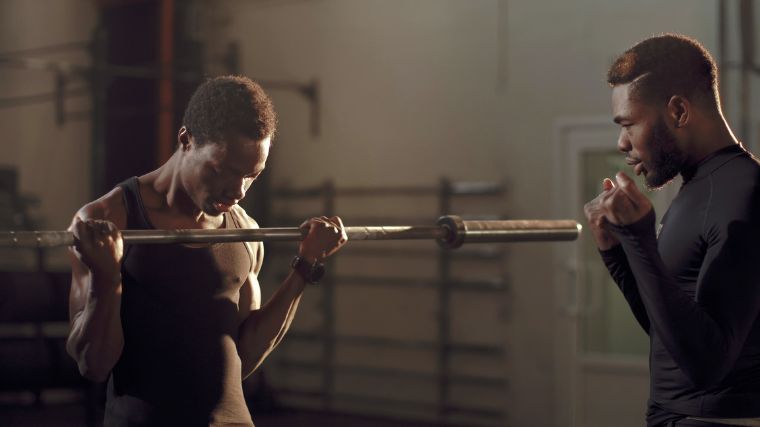
While your biceps are making gains, shoulder stability, core bracing, and your posterior chain also get smatterings of development.
Bodybuilders
Bodybuilders are all about chiseling out as much detail as possible. The drag curl has been touted as a great biceps peak developer but undoubtedly builds bigger arms for any bodybuilder. Try tacking on the drag curl as a burnout finisher to really pump up your arms at the end of your next training session.
Limited Equipment
One of the biggest benefits of the drag curl is that you don’t need a ton of weight to make it effective. It’s a high repetition burner exercise, so when you’re stuck with limited equipment you should still be able to use the drag curl to great effect.
Perform sets of 12-15 repetitions with moderate rest and you’ll get the arm pump you desire without the excessive weight requirements of other exercises.
Common Drag Curl Mistakes
The drag curl is a precision exercise that doesn’t require a lot of weight to be effective. That said, common errors include going too heavy, not controlling the eccentric portion, and performing too many repetitions.
Not Controlling the Eccentric
The eccentric part of any exercise is the lowering portion. There’s a ton of stimulation to gain by simply controlling the descent of each repetition instead of letting gravity take the wheel.
What’s doubly important about controlling the eccentric portion of your drag curl is that it helps you maintain proper form with your shoulders pinned in the correct position. Don’t rush, control your eccentrics.
Going Too Heavy
One major advantage of the drag curl is that you don’t need a ton of weight to get the job done. There is a huge drawback to going too heavy, and it’s that you’ll likely lose position and turn it into a normal biceps curl — or worse, use momentum.
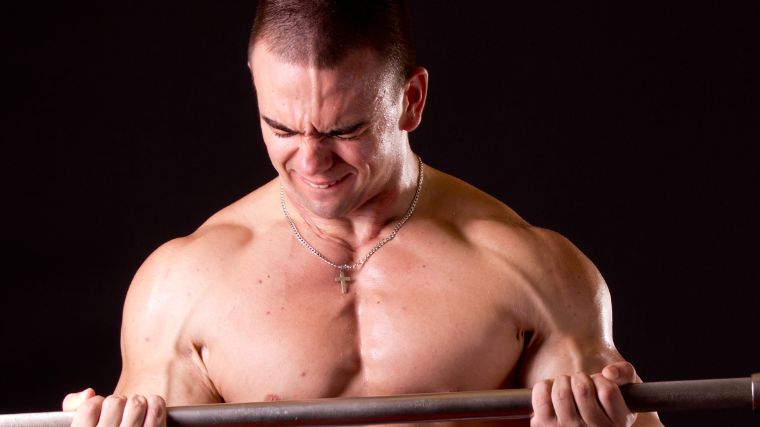
[Read More: Nutrition for Athletes — How to Eat for Muscle and Performance]
A breakdown in your drag curl technique means you aren’t going to get all the shoulder stability and muscle gain benefits, and when momentum kicks in this is doubly true. Keep your weight modest and your repetitions clean.
Too Many Repetitions
On the other hand, sometimes you might find yourself going too light. To see reasonably reliable muscle gain using lighter load exercises, getting relatively close to muscle failure is a good idea. (1) Although the drag curl benefits from a moderate to higher repetition count, bringing the set into deeper and deeper waters has real drawbacks.
Your exact proximity to failure gets harder to approximate with higher repetitions counts. (2) Stay in the pocket and avoid going too far on the reps here.
Drag It Out
The drag curl brings your biceps training close to the chest. It eliminates the need for constant heavy loading and allows you to train a few of your often forgotten stabilizers at the same time. Building a ton of muscle with the drag curl is a great option for beginners, bodybuilders, and needs next to no load — but you’ll still be working hard. Keep your effort high, technique clean, and reap the rewards of bigger biceps in no time.
FAQs
The drag curl is a less common biceps curl variation; these are frequently-asked questions about the movement.
What weight should I use for the drag curl?
The drag curl is best suited to medium to lighter weights that have you getting close to failure around the 12-15 repetition mark. Scale your weight so that your technique stays sharp but you still get a solid amount of hard repetitions in each set.
What equipment do I need for a drag curl?
The drag curl is a diverse exercise that is performed using many different training implements. A barbell, EZ-Curl bar, dumbbells, or even cables get the job done. Try them all and find what suits your body the best and allows you to work the hardest.
How should I program the drag curl?
The drag curl is a great end-of-workout exercise. Try pocketing it in at the end of any upper body workout for a quick finisher pump. It’s particularly effective at the end of a back session. Otherwise, try weaving the drag curl into part of a full arm workout.
References
- Lasevicius, T., Schoenfeld, B. J., Silva-Batista, C., Barros, T. S., Aihara, A. Y., Brendon, H., Longo, A. R., Tricoli, V., Peres, B. A., & Teixeira, E. L. (2022). Muscle Failure Promotes Greater Muscle Hypertrophy in Low-Load but Not in High-Load Resistance Training. Journal of strength and conditioning research, 36(2), 346–351.
- Zourdos, M. C., Goldsmith, J. A., Helms, E. R., Trepeck, C., Halle, J. L., Mendez, K. M., Cooke, D. M., Haischer, M. H., Sousa, C. A., Klemp, A., & Byrnes, R. K. (2021). Proximity to Failure and Total Repetitions Performed in a Set Influences Accuracy of Intraset Repetitions in Reserve-Based Rating of Perceived Exertion. Journal of strength and conditioning research, 35(Suppl 1), S158–S165.
Featured Image: Jasminko Ibrakovic / Shutterstock